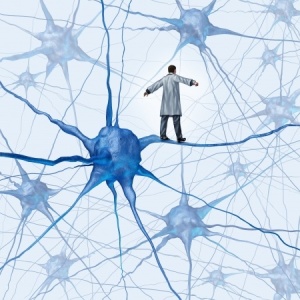In Him We Have Our Being
“The self-attesting Christ of Scripture has always been my starting point for everything I have said.” (Cornelius Van Til, Jerusalem and Athens)
I’ve thought for a long time that many of the theological disputes about Scripture stem from misunderstandings that occur because God’s eternal truths are being revealed in the space-time of our existence. Some things that are true about God and his creation cannot be made fully comprehensible to creatures who exist in space-time because God and his eternal truth are outside of time and space. Even here the words I have to use are inadequate, because into, outside and before all refer to space-time conditions. How can we conceptualize something existing outside of the universe we live in?
The distinction between God as the Creator and everything else (the creation; the heavens and earth) is a fundamental Christian belief. Starting with an acknowledgement of this distinction is essential for clear thinking about God, Scripture and theology. While I assume that most if not all Christians would agree in principle with what I’ve said here about the Creator-creation distinction, they can come up with radically different ideas about what God revealed in creation and said in Scripture, let alone how that revelation should be applied to our lives.
An analogy would be a photograph of a large three-dimensional object like the Cathedral of Learning in a two-dimensional world. It could really be a photo of the Cathedral, but it would not capture the grandeur of seeing the structure with your own eyes in three dimensions. But you couldn’t ever do that, because you exist in two dimensions. For creatures who live and move and have their being within two-dimensions, the photos of the three-dimensional Cathedral of Learning would at times seem contradictory and at odds with one another.
Even the photo thought to be the clearest representation of the Cathedral of Learning, would have inherent limitations. You can’t completely capture a three-dimensional object in a two-dimensional photo. You can’t comprehensively portray a three-dimensional object in a two-dimensional world.
Nevertheless, we could still say that each of the different pictures was really a picture of the Cathedral. But that would require a starting point that existed in three dimensions—like a photographer—to take the pictures. And we would need to trust that photographer to communicate to us honestly and truly in two dimensions what actually existed in three dimensions. In Christian theology, the God of Scripture is that starting point.
We could illustrate these ideas in the following way. I’ve borrowed the concept of connected circles to represent the Creator-creature distinction from the work of Cornelius Van Til. The additions are my own.
There is a necessary distinction between God and creation, meaning the entire universe. We exist within that created order, where God has embedded truth about Himself within the very fabric of creation. So whether we study the irreducible complexity of biochemical systems within the human body or the incredible fine-tuning of the universe for human life, we see the evidence of His hand in the design and functioning of the cosmos. In Him we live and move and have our being.
But this evidence in creation is open to some interpretation. The fine-tuning of the universe can lead you to the conclusion of a Designer and God. Or it could lead you to hypothesize the existence of multiple universes, where the probability of one “just right” for life and devoid of the benign hand of a Designer is more statistically probable. The first concludes there is a God. The second finds Him unnecessary.
We were given specific, direct communication about God and His eternal truths in the Word of God—the Word written and the Word revealed in Jesus Christ. Both the written Word and the embodied Word possess a duality of being in the sense that they simultaneously exist within and outside created space-time. There is even more potential here for misunderstanding—partly because of the entrance of eternal truth of the Word into space-time. Apply the above Cathedral of Learning analogy here. So another fundamental Christian belief is that God reveals Himself to us in creation and communicates to us through his Word; and we can trust these revelations.
If the general revelation of God in creation is denied or distorted, then we lose the ability to truly comprehend the glory and majesty of its Creator. When we misconceive the entrance of the divine Word (written or revealed in Christ) into creation, we lose the ability to commune with our Creator. If God existed without our ability to know Him in these two ways, then He truly would be unnecessary.
Another issue that contributes to the misinterpretation of Scripture is that we don’t want to be beholden to special revelation from God in order to understand anything—ourselves, creation and even God or His eternal truths. The story of the Fall in Genesis indicates how humanity wanted to be like God, knowing good from evil. So here is a third fundamental Christian belief—the rebellion of humanity. But that is a topic for another time.











